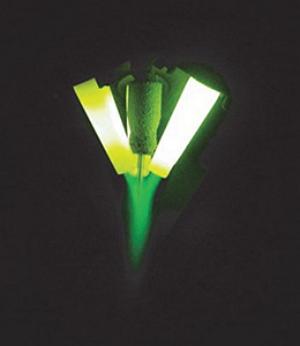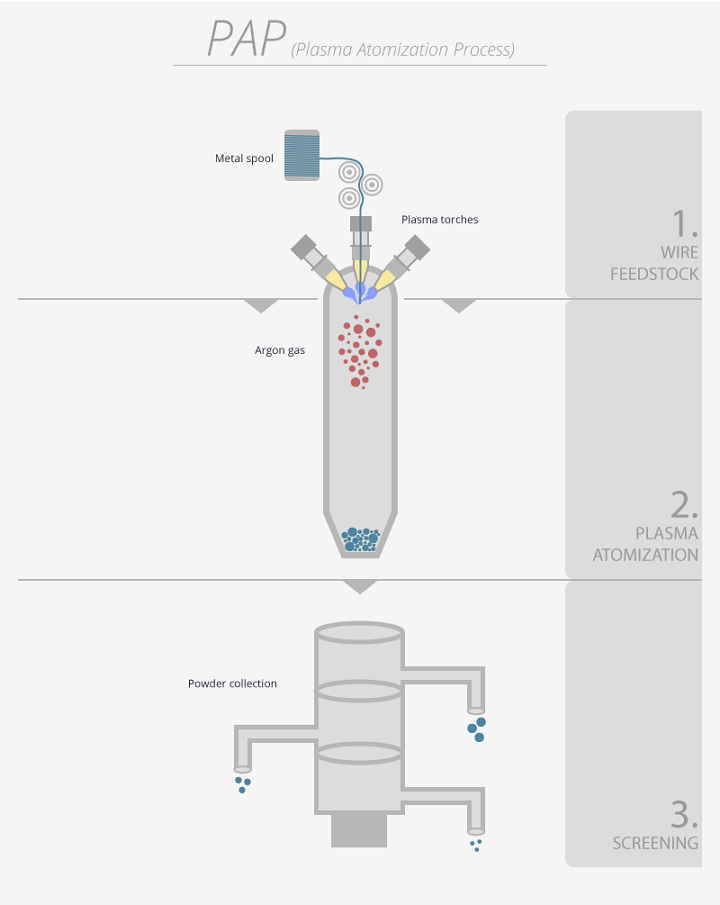PyroGenesis designs, develops, manufactures and commercializes advanced plasma processes from a team of experienced engineers, scientists and technicians from their offices in Montreal, and they often work in partnership with the US Department of Defense and a variety of multinationals.
In the past, PyroGenesis has done pioneering processing work with fullerenes – or buckyballs – the breakthrough materials which led to the development of carbon nanotubes and graphene. The company also uses a proprietary “plasma atomization” process to produce pure, spherical titanium and titanium alloy powders which have found a foothold as feedstock for metal 3D printing applications.
These spherical metal powders, nanomaterials and processes for the purification and refinement of mineral feedstocks have now led the company to receiving a milestone payment of $385,000 for the shipment of their first of ten powder production systems for 3D printing. The payment is part of a $12.5 contract the company signed last year to provide their metal powder production platforms to an asian customer.
“Under this contract, nine of the ten systems are to be built once the first system is fully installed and commissioned in Asia,” says P. Peter Pascali, the President and Chief Executive Officer of PyroGenesis Canada Inc. “With the first system being shipped, and installation and commissioning scheduled for this summer, we plan to start manufacturing the last nine systems in the fall of 2015.”
Hot on the heels of that announcement, PyroGenesis says that they have also filed a provisional patent for an improved 3D printable powder production process which features higher production rates and better distribution of the powders.
Pierre Carabin, Director of Engineering for PyroGenesis, says the company is constantly improving and developing their products and processes to maintain their position in cutting edge industries. Carabin says the need to produce particles of a specific size distribution is a key to the growth of the additive manufacturing industry and 3D printing. The company says they plan to file a world-wide patent application within the next 12 months.
The Plasma Atomization Process, or PAP, is used to create “highly flowable and very pure spherical metallic powders.” The process is used to produce metal powders of Titanium, Niobium, Nitinol, Aluminum and other reactive metals and alloys at rates of up to 150 kilograms per day.
The process works like this: Pre-qualifed and preheated wire is fed into the apex of three converging, patented plasma torches where the energy and supersonic nature of a 10,000°C plasma plume set melts the incoming wire and shears off the metal. The process creates tiny, molten metal droplets which fall into an argon-filled, water-cooled chamber where they are collected. The resulting material is a perfectly spherical, fine metal powder which contains very little in the way of contaminants.
“Additive manufacturing is a $2.5 billion industry and it is expected to grow to $10 billion by 2020,” Pascali says. “High quality powders such as those produced by PyroGenesis, are an essential element fueling this growth.”
Carabin adds that the company’s patent portfolio includes 38 allowed, pending and/or provisional patents which cover a total of 14 separate inventions. He says that, in addition, PyroGenesis has access to some 10 other similar patents.
Have you ever used metal powders from PyroGenesis in your additive manufacturing processes? Let us know about your experience in the PyroGenesis Patent Application forum thread on 3DPB.com.
Subscribe to Our Email Newsletter
Stay up-to-date on all the latest news from the 3D printing industry and receive information and offers from third party vendors.
Print Services
Upload your 3D Models and get them printed quickly and efficiently.
You May Also Like
The Market and Industry Potential of Multi-Material 3D and 4D Printing in Additive Electronics
Additive manufacturing leverages computer-based software to create components for products by depositing either dielectric or conductive materials, layer by layer, into different geometric shapes. Since its birth in the 1980s,...
3DPOD 262: Bio-inspired Design for AM with Dhruv Bhate, Arizona State University
Dhruv Bhate is an associate professor at Arizona State University. There, he looks at structures, materials, and design. Previously, he worked at PADT as well as in the semiconductor and...
3DPOD 261: Tooling and Cooling for AM with Jason Murphy, NXC MFG
Jason Murphy´s NXC MFG (Next Chapter Manufacturing) is not a generalist service; instead, the company specializes in making tooling. Using LPBF and binder jet, the company produces some of the...
3DPOD 260: John Hart on VulcanForms, MIT, Desktop Metal and More
John Hart is a Professor at MIT; he´s also the director of the Laboratory for Manufacturing and Productivity as well as the director of the Center for Advanced Production Technologies....



































